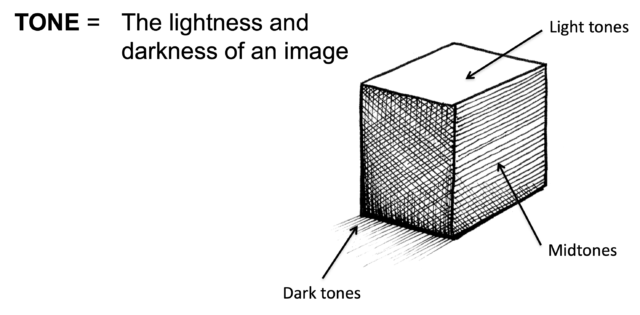Introduction toCheck your Angles
Is something in your drawing feeling a little… off? Don’t worry, your eyes might just need a little backup! In this lesson, we’ll learn a super simple trick that artists use all the time: checking angles. By holding up your pencil or ruler to compare the tilt of lines and shapes in what you’re drawing, you can make sure those same angles appear just right on your page.
It’s like being a detective for your drawing — spotting the sneaky slants and subtle tilts that make everything look more accurate and real. Whether it’s the slope of a rooftop or the lean of a tree, once you learn to see angles clearly, your drawings will start to click.
How to Check Angles in Your Drawing
Drawing things is like solving a puzzle. You’re figuring out where each piece goes and how it leans. Your pencil is your secret tool to measure and check angles as you draw! Let’s discover how…

Step-by-step:
Start by drawing the big shapes very lightly.
Let’s say you’re drawing a mug, an apple, and a juice box.
-
Draw a circle or oval for the apple.
-
A tall rectangle for the juice box.
-
A wider oval for the top of the mug.
Use just gentle lines — like whispers on the page.
Now, hold your pencil up in front of your eye.
-
Look at the handle of the mug. Is it leaning left or right?
-
Close one eye and line your pencil up with that handle.
-
Keep your arm straight so you don’t change the angle.
Now, keeping your pencil tilted the same way, move your pencil down to your paper and check if the line you drew for the mug handle tilts the same way.
If it’s off, fix it. Little changes make a big difference!
Let’s say:
-
The juice box is standing tall (vertical!).
-
The apple is beside it.
-
And the mug is a little tilted.
Use your pencil to check:
-
Is the side of the juice box straight up and down?
-
Is the mug leaning more than the juice box?
Ask yourself:
– “Which line leans more?”
– “Where do they point?”
This helps you keep your shapes believable — just like in real life!
Pretend your pencil is a magic ruler.
-
Hold it straight up and down like a fence post.
-
Is the apple directly under the juice box?
-
Is the mug’s handle lined up with the middle of the juice box?
-
-
Hold it side to side (horizontal).
-
Does the top of the apple line up with the bottom of the mug?
-
Is the juice box taller than the mug?
-
You’ll start to see cool surprises like:
-
- “Hey! The mug and the apple are the same height!”
- “Whoa! The handle lines up with the apple’s top!”
Use your thumb on the pencil like this:
-
Hold the pencil in front of the juice box.
-
Slide your thumb to mark how tall it is.
-
Now move to the apple — how many “juice box heights” is the apple?
-
Maybe it’s only half as tall.
-
That’s how artists check proportions — the size of things compared to each other.
Where do objects intersect or overlap?
-
Does the apple touch the side of the juice box?
-
Does the mug block part of the apple?
Find the exact spot where they meet — this helps glue your drawing together!
Over and over:
-
Look carefully.
-
Hold up your pencil.
-
Compare angles.
-
Check what lines up.
-
Adjust your drawing.
Little by little, your sketch will look more like the real thing — like magic you made with your eyes and pencil!
Top tips:
- Keep one eye closed when checking angles
- Your pencil is your measuring stick and angle checker
- Light lines first — it’s okay to fix things!
- Compare shapes to each other: “Is this wider? Taller? More tilted?”
Examples:
See it in action:
Step-by-step:

To begin with, practise your cross-hatching in a series of boxes, varying the number of intersecting lines you use to make change how light or dark your boxes are.
- Draw 6-8 boxes in pencil that are all the same size, using your ruler to keep them straight.
- You can leave the first box empty. That’s all you have to do for the lightest parts of your drawings!
- In the next box, neatly draw some diagonal lines that are all the same distance apart. You don’t need a ruler for these lines because you want your cross-hatching to look more sketched than that.
- In the following box, add another set of lines that go in a different direction. Having two sets of lines will make the box appear a bit darker.
- Continue to add cross-hatching to the remaining boxes, using more and more lines that get closer and closer together so that each box is darker than the last.
Once you’ve done the steps above you should have a nice stepped gradient, well done!
Have a go at creating another cross-hatched gradient, but this time you only need to draw one long rectangular box.
Try to create a gradient just like before, only this time you want it to transition from light to dark as seamlessly as you can, without any sudden changes.
Once you’ve got to grips with your shading gradients using cross-hatching, have a go at drawing a cross-hatched vase (or similar object).
- Lightly draw a line down the centre of your page. You will use this as a line of symmetry to help keep your drawing looking straight.
- Start with your initial outlines, using your ruler to check the left of your vase is the same distance from your line of symmetry on both the left and the right.
- Make sure the bottom of your vase is rounded.
- At the top of your vase draw an ellipse (like a narrow oval), rather than a circle.
Extra tip: if you draw contour lines on your vase you’ll find it easier to know where to cross-hatch
Add cross-hatching to your vase using a black fine-liner pen, just like you did on your practice gradient. The difference this time is that your gradients will follow the contours of the vase.
To keep it simple, draw a vase that is lighter towards the centre and darker towards the outside, then put a linear gradient on the ellipse at the top to create a shadow.
Top tips:
- Keep one eye closed when checking angles
- Your pencil is your measuring stick and angle checker
- Light lines first — it’s okay to fix things!
- Compare shapes to each other: “Is this wider? Taller? More tilted?”
The finished drawing:

Examples by other students:
What do you think has gone well and how might they be improved?
